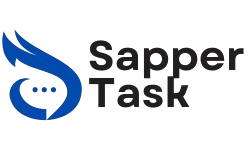Giro d'Italia 2025-
Here's an in-depth look at the upcoming stages of the 2025 Giro d'Italia and detailed analyses of the top 10 General Classification (GC) contenders following Stage 7.
Upcoming Stages: Previews & Strategic Insights
Stage 8 – Saturday, May 17: Giulianova → Castelraimondo (197 km)
Profile: A challenging medium-mountain stage featuring over 3,700 meters of elevation gain. The route includes four categorized climbs, with the most demanding being the Sassotetto (13 km at 7.4%) situated mid-stage.
Finale: The last 20 km are particularly treacherous, featuring the steep Muro di Gagliole (800 meters at 12%, peaking at 14%) followed by a technical descent into Castelraimondo.
Tactics: While breakaways have a strong chance, GC teams may seize the opportunity to test rivals on the steep gradients. UAE Team Emirates, with multiple contenders, could apply pressure to isolate competitors.
Weather: Conditions are expected to deteriorate throughout the day, with temperatures dropping from 20°C at the start to around 15°C with potential rain at the finish.
Stage 9 – Sunday, May 18: Gubbio → Siena (181 km)
Profile: A dynamic stage featuring five gravel sectors totaling approximately 30 km, reminiscent of the Strade Bianche. The route includes numerous short, steep climbs and technical descents.
Finale: The stage concludes in Siena's iconic Piazza del Campo, with the final kilometer ramping up to a 12.4% gradient.
Tactics: Positioning will be crucial, especially on gravel sectors. Riders with cyclocross experience, like Tom Pidcock, may have an advantage. GC contenders must remain vigilant to avoid time losses due to mechanical issues or crashes.
Top 10 GC Contenders: Performance Analyses:-
1. Primož Roglič (Red Bull–BORA–Hansgrohe) – 24:32:30
Form: Regained the maglia rosa after Stage 7. Demonstrates consistent performance and tactical acumen.
Outlook: Strong in time trials and adept on varied terrains, making him a formidable GC leader.
2. Juan Ayuso (UAE Team Emirates-XRG) – +0:04
Form: Secured his first Grand Tour stage win on Stage 7 with a decisive attack.
Outlook: At 22, he's showcasing maturity and strength, positioning himself as a serious contender.
3. Isaac Del Toro (UAE Team Emirates-XRG) – +0:09
Form: Consistent performances, finishing second on Stage 7.
Outlook: A promising young talent, providing UAE with strategic options in the mountains.
4. Antonio Tiberi (Bahrain Victorious) – +0:27
Form: Steady performances, maintaining proximity to the leaders.
Outlook: Potential to capitalize on opportunities in upcoming stages, especially if rivals falter.
5. Max Poole (Team Picnic PostNL) – +0:30
Form: Impressive fifth-place finish on Stage 7.
Outlook: Emerging as a dark horse, with potential to disrupt the established hierarchy.
6. Michael Storer (Tudor Pro Cycling Team) – +0:33
Form: Consistent top-10 finishes, showcasing climbing prowess.
Outlook: Could be a key player in breakaways or as a support rider in mountain stages.
7. Brandon McNulty (UAE Team Emirates-XRG) – +0:34
Form: Solid performances, contributing to UAE's strong team dynamics.
Outlook: Offers tactical flexibility for UAE, either as a GC contender or super-domestique.
8. Mathias Vacek (Lidl–Trek) – +0:37
Form: Maintaining a steady position within the top 10.
Outlook: Will need to capitalize on specific stages to move up the GC standings.
9. Simon Yates (Team Visma | Lease a Bike) – +0:39
Form: Experienced rider with a history of strong performances in Grand Tours.
Outlook: A potential threat in the mountains, especially if he targets specific stages.
10. Richard Carapaz (EF Education–EasyPost) – +0:41
Form: Recovered from a crash in Stage 6, showing resilience.
Outlook: A seasoned climber who could stage a comeback in the high mountains.
The upcoming stages, with their varied terrains and challenges, are poised to further shake up the GC standings. Riders and teams will need to balance aggression with caution, especially on technical descents and gravel sectors.
https://youtu.be/lxctHAOG05M
Here's an in-depth look at the upcoming stages of the 2025 Giro d'Italia and detailed analyses of the top 10 General Classification (GC) contenders following Stage 7.
Upcoming Stages: Previews & Strategic Insights
Stage 8 – Saturday, May 17: Giulianova → Castelraimondo (197 km)
Profile: A challenging medium-mountain stage featuring over 3,700 meters of elevation gain. The route includes four categorized climbs, with the most demanding being the Sassotetto (13 km at 7.4%) situated mid-stage.
Finale: The last 20 km are particularly treacherous, featuring the steep Muro di Gagliole (800 meters at 12%, peaking at 14%) followed by a technical descent into Castelraimondo.
Tactics: While breakaways have a strong chance, GC teams may seize the opportunity to test rivals on the steep gradients. UAE Team Emirates, with multiple contenders, could apply pressure to isolate competitors.
Weather: Conditions are expected to deteriorate throughout the day, with temperatures dropping from 20°C at the start to around 15°C with potential rain at the finish.
Stage 9 – Sunday, May 18: Gubbio → Siena (181 km)
Profile: A dynamic stage featuring five gravel sectors totaling approximately 30 km, reminiscent of the Strade Bianche. The route includes numerous short, steep climbs and technical descents.
Finale: The stage concludes in Siena's iconic Piazza del Campo, with the final kilometer ramping up to a 12.4% gradient.
Tactics: Positioning will be crucial, especially on gravel sectors. Riders with cyclocross experience, like Tom Pidcock, may have an advantage. GC contenders must remain vigilant to avoid time losses due to mechanical issues or crashes.
Top 10 GC Contenders: Performance Analyses:-
1. Primož Roglič (Red Bull–BORA–Hansgrohe) – 24:32:30
Form: Regained the maglia rosa after Stage 7. Demonstrates consistent performance and tactical acumen.
Outlook: Strong in time trials and adept on varied terrains, making him a formidable GC leader.
2. Juan Ayuso (UAE Team Emirates-XRG) – +0:04
Form: Secured his first Grand Tour stage win on Stage 7 with a decisive attack.
Outlook: At 22, he's showcasing maturity and strength, positioning himself as a serious contender.
3. Isaac Del Toro (UAE Team Emirates-XRG) – +0:09
Form: Consistent performances, finishing second on Stage 7.
Outlook: A promising young talent, providing UAE with strategic options in the mountains.
4. Antonio Tiberi (Bahrain Victorious) – +0:27
Form: Steady performances, maintaining proximity to the leaders.
Outlook: Potential to capitalize on opportunities in upcoming stages, especially if rivals falter.
5. Max Poole (Team Picnic PostNL) – +0:30
Form: Impressive fifth-place finish on Stage 7.
Outlook: Emerging as a dark horse, with potential to disrupt the established hierarchy.
6. Michael Storer (Tudor Pro Cycling Team) – +0:33
Form: Consistent top-10 finishes, showcasing climbing prowess.
Outlook: Could be a key player in breakaways or as a support rider in mountain stages.
7. Brandon McNulty (UAE Team Emirates-XRG) – +0:34
Form: Solid performances, contributing to UAE's strong team dynamics.
Outlook: Offers tactical flexibility for UAE, either as a GC contender or super-domestique.
8. Mathias Vacek (Lidl–Trek) – +0:37
Form: Maintaining a steady position within the top 10.
Outlook: Will need to capitalize on specific stages to move up the GC standings.
9. Simon Yates (Team Visma | Lease a Bike) – +0:39
Form: Experienced rider with a history of strong performances in Grand Tours.
Outlook: A potential threat in the mountains, especially if he targets specific stages.
10. Richard Carapaz (EF Education–EasyPost) – +0:41
Form: Recovered from a crash in Stage 6, showing resilience.
Outlook: A seasoned climber who could stage a comeback in the high mountains.
The upcoming stages, with their varied terrains and challenges, are poised to further shake up the GC standings. Riders and teams will need to balance aggression with caution, especially on technical descents and gravel sectors.
https://youtu.be/lxctHAOG05M
Giro d'Italia 2025-
Here's an in-depth look at the upcoming stages of the 2025 Giro d'Italia and detailed analyses of the top 10 General Classification (GC) contenders following Stage 7.
Upcoming Stages: Previews & Strategic Insights
Stage 8 – Saturday, May 17: Giulianova → Castelraimondo (197 km)
Profile: A challenging medium-mountain stage featuring over 3,700 meters of elevation gain. The route includes four categorized climbs, with the most demanding being the Sassotetto (13 km at 7.4%) situated mid-stage.
Finale: The last 20 km are particularly treacherous, featuring the steep Muro di Gagliole (800 meters at 12%, peaking at 14%) followed by a technical descent into Castelraimondo.
Tactics: While breakaways have a strong chance, GC teams may seize the opportunity to test rivals on the steep gradients. UAE Team Emirates, with multiple contenders, could apply pressure to isolate competitors.
Weather: Conditions are expected to deteriorate throughout the day, with temperatures dropping from 20°C at the start to around 15°C with potential rain at the finish.
Stage 9 – Sunday, May 18: Gubbio → Siena (181 km)
Profile: A dynamic stage featuring five gravel sectors totaling approximately 30 km, reminiscent of the Strade Bianche. The route includes numerous short, steep climbs and technical descents.
Finale: The stage concludes in Siena's iconic Piazza del Campo, with the final kilometer ramping up to a 12.4% gradient.
Tactics: Positioning will be crucial, especially on gravel sectors. Riders with cyclocross experience, like Tom Pidcock, may have an advantage. GC contenders must remain vigilant to avoid time losses due to mechanical issues or crashes.
Top 10 GC Contenders: Performance Analyses:-
1. Primož Roglič (Red Bull–BORA–Hansgrohe) – 24:32:30
Form: Regained the maglia rosa after Stage 7. Demonstrates consistent performance and tactical acumen.
Outlook: Strong in time trials and adept on varied terrains, making him a formidable GC leader.
2. Juan Ayuso (UAE Team Emirates-XRG) – +0:04
Form: Secured his first Grand Tour stage win on Stage 7 with a decisive attack.
Outlook: At 22, he's showcasing maturity and strength, positioning himself as a serious contender.
3. Isaac Del Toro (UAE Team Emirates-XRG) – +0:09
Form: Consistent performances, finishing second on Stage 7.
Outlook: A promising young talent, providing UAE with strategic options in the mountains.
4. Antonio Tiberi (Bahrain Victorious) – +0:27
Form: Steady performances, maintaining proximity to the leaders.
Outlook: Potential to capitalize on opportunities in upcoming stages, especially if rivals falter.
5. Max Poole (Team Picnic PostNL) – +0:30
Form: Impressive fifth-place finish on Stage 7.
Outlook: Emerging as a dark horse, with potential to disrupt the established hierarchy.
6. Michael Storer (Tudor Pro Cycling Team) – +0:33
Form: Consistent top-10 finishes, showcasing climbing prowess.
Outlook: Could be a key player in breakaways or as a support rider in mountain stages.
7. Brandon McNulty (UAE Team Emirates-XRG) – +0:34
Form: Solid performances, contributing to UAE's strong team dynamics.
Outlook: Offers tactical flexibility for UAE, either as a GC contender or super-domestique.
8. Mathias Vacek (Lidl–Trek) – +0:37
Form: Maintaining a steady position within the top 10.
Outlook: Will need to capitalize on specific stages to move up the GC standings.
9. Simon Yates (Team Visma | Lease a Bike) – +0:39
Form: Experienced rider with a history of strong performances in Grand Tours.
Outlook: A potential threat in the mountains, especially if he targets specific stages.
10. Richard Carapaz (EF Education–EasyPost) – +0:41
Form: Recovered from a crash in Stage 6, showing resilience.
Outlook: A seasoned climber who could stage a comeback in the high mountains.
The upcoming stages, with their varied terrains and challenges, are poised to further shake up the GC standings. Riders and teams will need to balance aggression with caution, especially on technical descents and gravel sectors.
https://youtu.be/lxctHAOG05M

0 التعليقات
0 المشاركات
4كيلو بايت مشاهدة
0 معاينة



